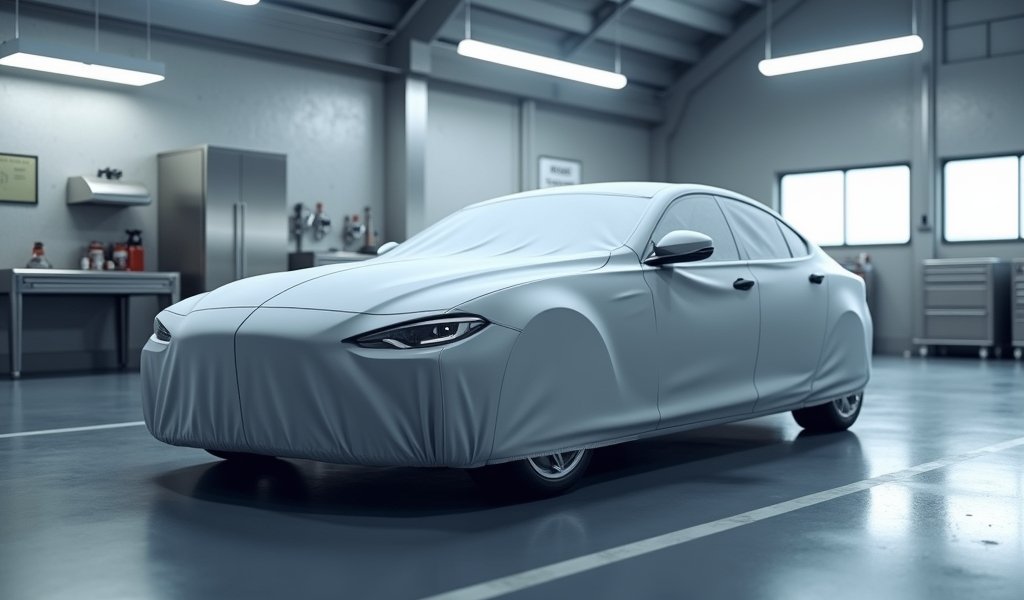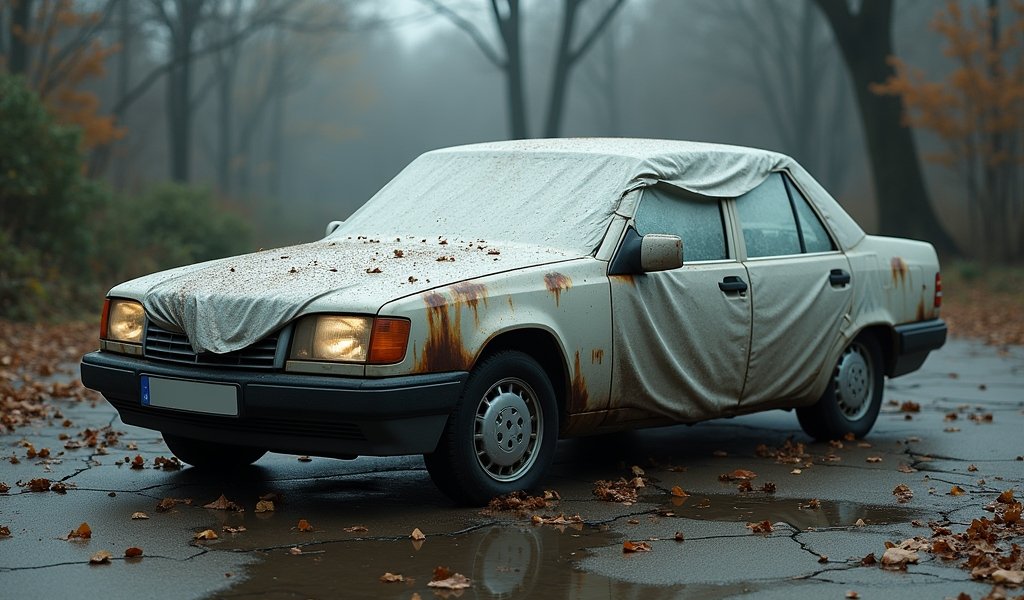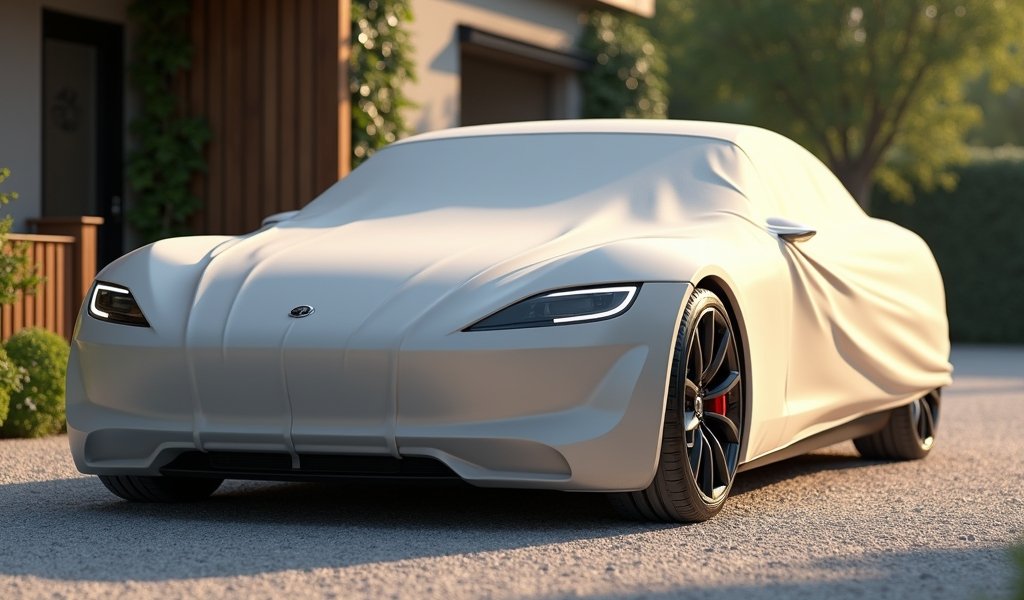Overview
This article explains how outdoor car covers protect vehicles from environmental damage like UV rays, rain, and debris, while comparing types, features, and price points ranging from budget ($50-100) to premium options ($200-500). It provides specific product recommendations, proper usage techniques, and additional protection measures to maximize vehicle preservation and maintain resale value.
Table of Contents
- Why Protect Your Vehicle with an Outdoor Car Cover
- Types of Car Covers for Outdoor Storage
- Important Features to Look for in Outdoor Car Covers
- Top Recommendations for Outdoor Car Covers
- Proper Usage and Maintenance Tips
- Additional Protection Measures
- Conclusion
- Frequently Asked Questions
Why Protect Your Vehicle with an Outdoor Car Cover
Your vehicle faces a constant barrage of enemies when parked outside. UV rays beat down relentlessly, slowly fading your paint and deteriorating rubber seals. Rain carries acidic pollutants that etch into your clear coat. Tree sap, bird droppings, and pollen create a corrosive cocktail that can permanently damage your finish if left untreated.
I’ve seen countless vehicles age prematurely from outdoor exposure during my 20+ years working as an automotive technician. A quality car cover is one of the smartest investments you can make to protect your vehicle’s appearance, functionality, and resale value. Think of it as preventative maintenance – a fraction of what you’d spend repairing environmental damage down the road.
The right car cover acts as a shield against these elements while allowing proper airflow to prevent moisture buildup underneath. Whether you’re protecting a daily driver or a weekend cruiser, the protection benefits far outweigh the minor inconvenience of putting a cover on and taking it off.
Types of Car Covers for Outdoor Storage

When selecting an outdoor car cover, you’ll encounter several distinct types, each designed for specific conditions. All-weather covers offer the most versatility, featuring multiple layers of fabric that protect against sun, rain, snow, and dust. These typically consist of a water-resistant outer layer, a cushioning middle layer, and a soft inner lining to protect your paint.
For extreme environments, specialized covers offer enhanced protection. UV-protective covers incorporate reflective materials to block harmful rays in sunny climates, while waterproof car covers for winter use heavier materials with sealed seams for maximum moisture protection. If you live in areas with heavy snowfall, look for covers with reinforced tops that can handle the weight without sagging against your vehicle.
The fit of your car cover significantly impacts its effectiveness. Custom-fit covers are tailored to your specific make and model, providing snug protection that minimizes wind flapping and maximizes coverage. Universal-fit covers come in various sizes but won’t conform perfectly to your vehicle’s contours. While they’re more affordable (typically $50-100 compared to $200-400 for custom options), the protection difference is noticeable, especially in harsh conditions.
For those storing classic cars outdoors, consider investing in a premium multi-layer cover with enhanced breathability to prevent moisture from damaging vintage paint and chrome. These specialized covers might seem expensive initially, but they’re far cheaper than repainting or replating damaged components.
Important Features to Look for in Outdoor Car Covers
Material quality is the foundation of an effective car cover. Look for covers made from solution-dyed polyester or polypropylene with multiple layers – these resist fading and deterioration far better than basic polyester. The best covers balance weather protection with breathability through microscopic pores that allow moisture vapor to escape while blocking water droplets from entering.
The interior lining directly contacts your paint, so it must be gentle. Premium covers use soft cotton or fleece linings that won’t scratch even when dust gets trapped underneath. I’ve seen too many cars damaged by cheap covers with rough interiors that essentially function as sandpaper every time the wind blows.
Secure attachment systems prevent your cover from becoming a sail in strong winds. Look for covers with elastic hems, reinforced grommets, and undercarriage straps. Some premium models include cable locks that thread through these grommets, providing both wind security and theft deterrence – a valuable feature if you’re storing in public areas.
Thoughtful details separate great covers from good ones. Reinforced seams prevent tearing at stress points, while antenna patches protect these vulnerable areas from damage. Some covers include marked areas to indicate the front end, making installation quicker and ensuring proper alignment. Breathable car covers with adequate ventilation prevent condensation buildup that can lead to mold and mildew, a crucial feature for long-term storage.
Top Recommendations for Outdoor Car Covers
After testing dozens of covers across various climate conditions, several standouts deserve recognition for outdoor protection. For the best overall performance, the Covercraft WeatherShield HP consistently excels with its excellent water resistance, breathability, and custom-tailored fit. At around $300, it represents a significant investment but delivers exceptional protection that pays for itself over time. The fabric has a remarkable softness that won’t harm your paint while still providing robust protection against harsh elements.
Budget-conscious owners should consider the Classic Accessories OverDrive PolyPRO 3, which offers surprisingly good protection at $70-90. While it won’t match the precision fit or longevity of premium options, its three-layer design handles moderate weather conditions well. Its reinforced corners and elasticized hem prevent wind lift effectively, making it an excellent value proposition for those who can’t justify premium prices.
For extreme weather conditions, the CarCovers.com Platinum Shield deserves serious consideration. Its seven-layer construction includes a waterproof film layer sandwiched between soft inner and durable outer layers. I’ve seen these covers maintain integrity through heavy snowfall that crushed lesser options. At $200-250 depending on vehicle size, they strike an excellent balance between protection and affordability for severe climates.
Owners of collectible vehicles should look at the Coverking Stormproof custom cover. Its remarkable water resistance approaches marine-grade fabrics while maintaining breathability that prevents moisture trapping. The ultra-soft inner lining is especially gentle on delicate finishes, and the material resists UV deterioration exceptionally well according to Consumer Reports testing. Though expensive at $400+, it’s appropriate protection for vehicles where appearance preservation is paramount.
Proper Usage and Maintenance Tips

Always start with a clean vehicle before applying your cover. Dirt particles trapped between your paint and the cover can cause microscopic scratching when the cover moves. I recommend a thorough wash and dry, paying special attention to bird droppings, tree sap, and other contaminants that could damage your finish if trapped under the cover.
When installing your cover, start at one end (typically the front) and work your way systematically to the opposite end. Take your time to align the cover properly, ensuring mirrors and antenna pockets fit correctly. For vehicles with antennas that don’t retract, use the provided grommets or pockets rather than stretching the fabric. Always secure all attachment points, even in calm conditions – weather can change quickly, and a partially secured cover can cause more damage than no cover at all.
Maintenance of your car cover extends its lifespan considerably. Most covers can be machine washed when dirty, though always follow manufacturer guidelines regarding water temperature and detergent type. Avoid fabric softeners, which can degrade water-resistant treatments. Allow the cover to dry completely before storing to prevent mildew growth that can transfer to your vehicle.
For winter storage, brush off snow accumulation regularly rather than allowing it to build up and freeze. Heavy snow can compress the cover against your vehicle, reducing insulating air gaps and potentially freezing to your paint. During leaf-falling seasons, check under the cover periodically for trapped leaves that could stain your finish, as recommended by Hagerty’s automotive preservation experts.
Additional Protection Measures
A car cover works best as part of a comprehensive protection strategy. Consider using tire covers alongside your car cover, as they prevent flat-spotting and sidewall UV damage during extended storage. Placing a windshield sun shade under your cover adds an extra layer of protection for delicate dashboard materials that are particularly vulnerable to UV degradation.
Moisture management requires special attention for outdoor storage. Desiccant packs placed inside your vehicle absorb humidity that might otherwise cause interior mildew or electronics corrosion. For vehicles stored more than a month, a battery maintainer connected through a small opening in the cover keeps your electrical system healthy while preventing battery sulfation.
Consider seasonal adjustments to your protection approach. During pollen season, rinse your cover more frequently to prevent buildup that can transfer to your paint. In winter, avoid covering your car immediately after driving, as the heat can melt snow onto your cover which may then refreeze. During fall, be particularly vigilant about removing leaves and debris that can trap moisture against your vehicle’s surface and cause staining or corrosion.
For maximum protection in challenging environments, consider combining your cover with portable shelter solutions. Even a simple carport provides additional protection against direct precipitation and UV exposure, dramatically extending the effectiveness of your car cover. These complementary measures create a defense-in-depth approach that preserves your vehicle’s condition through the harshest conditions, as noted by Edmunds’ automotive experts.
Conclusion
Selecting the right car cover for outdoor storage represents one of the most cost-effective ways to preserve your vehicle’s condition and value. The perfect cover balances protection, breathability, and durability while fitting your specific vehicle and climate conditions. While premium covers offer superior performance and longevity, even budget-friendly options provide meaningful protection when used correctly.
Remember that consistent use maximizes benefits – the best cover offers zero protection sitting in your garage while your car faces the elements unprotected. Develop the habit of covering your vehicle whenever it will be parked outside for extended periods, and you’ll see significantly reduced deterioration from environmental factors over time.
Proper maintenance of both your vehicle and its cover creates a comprehensive protection system that preserves appearance, prevents costly repairs, and maintains resale value. By investing in quality protection now and following the guidelines outlined in this article, you’re making a smart decision that will pay dividends throughout your vehicle ownership experience.
Frequently Asked Questions
How much should I expect to spend on a quality outdoor car cover?
For universal-fit covers offering basic protection, expect to spend $50-100, while custom-fit covers with premium materials range from $200-500. The investment scales with the value of your vehicle and severity of your climate conditions.
Can I use an indoor car cover for occasional outdoor use?
Indoor covers lack water resistance and UV protection necessary for outdoor use. Even for occasional outdoor use, you’ll need a cover specifically designed with weather protection features.
How often should I wash my car cover?
Wash your car cover when visibly dirty or every 3-4 months of regular use. More frequent cleaning may be necessary during heavy pollen seasons or if your vehicle is parked near trees.
Will a car cover scratch my paint?
Quality covers with soft inner linings won’t scratch clean paint. However, trapped dirt between a cover and dirty car can cause scratching, which is why washing your vehicle before covering is essential.
Can I put a car cover on a wet car?
Avoid covering a wet vehicle whenever possible as trapped moisture can cause water spots and potential mildew. If unavoidable, use only breathable covers and remove as soon as practical to allow complete drying.

